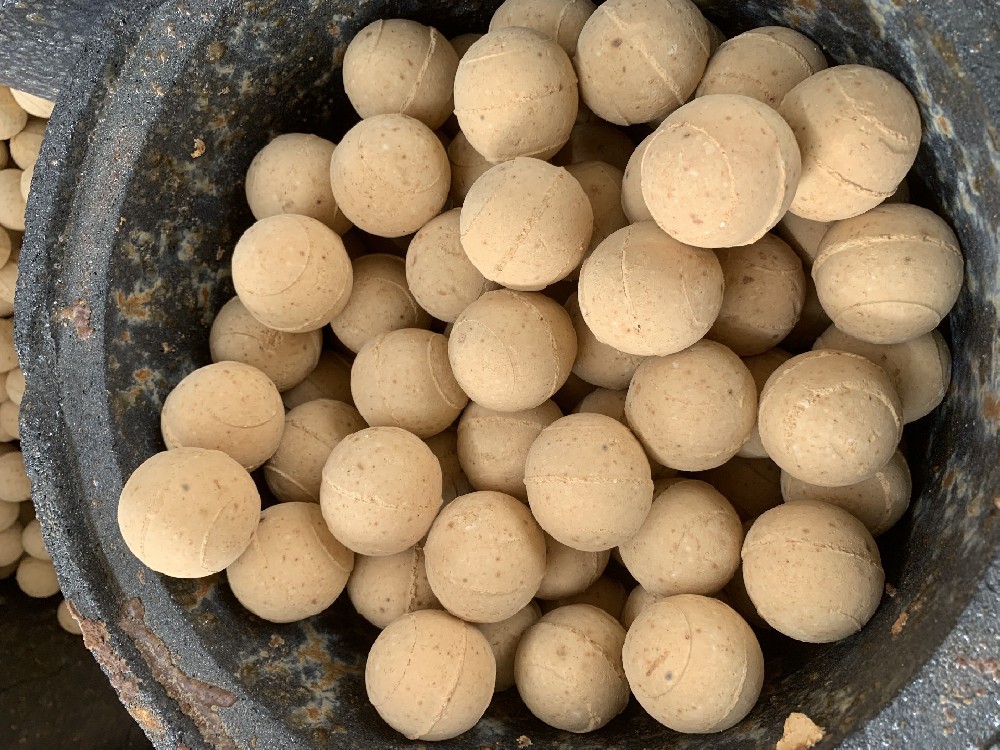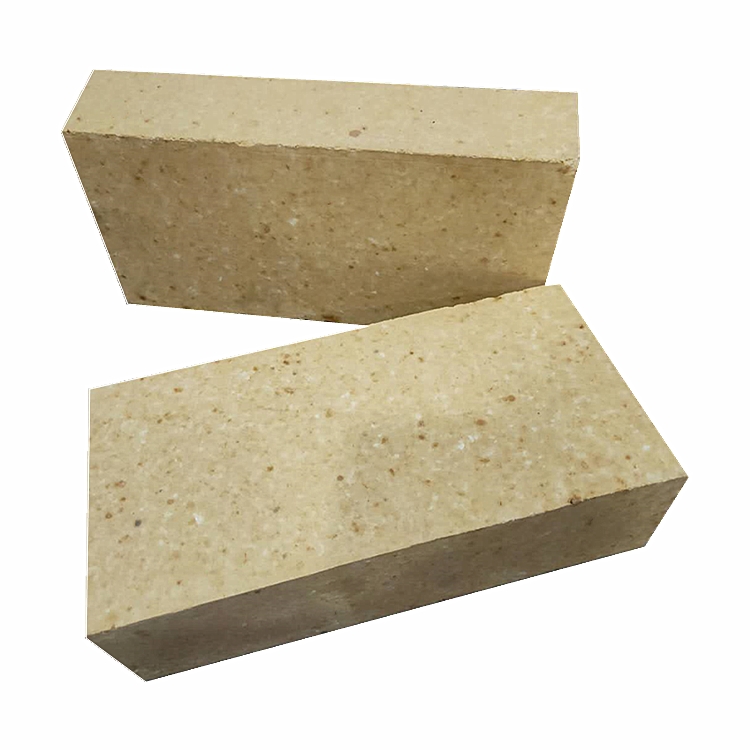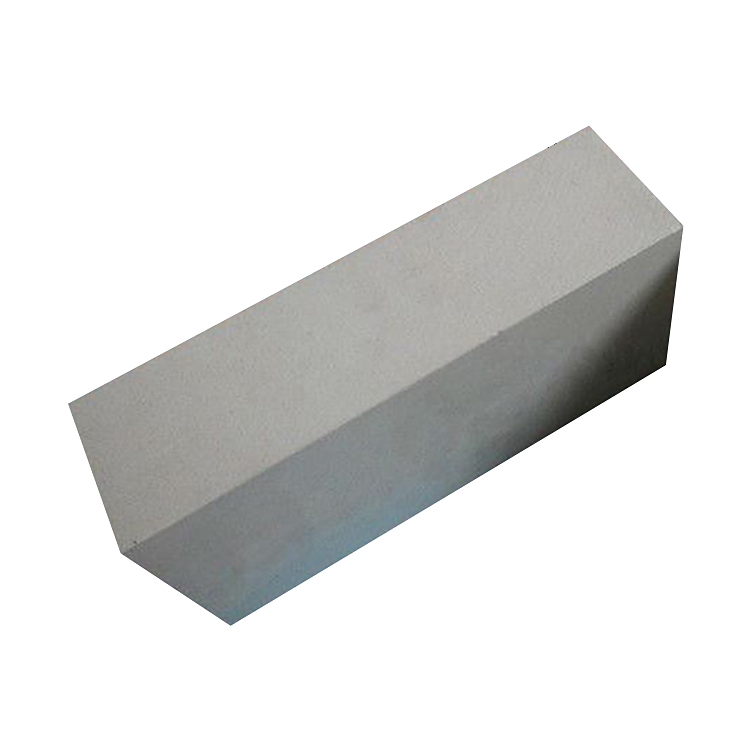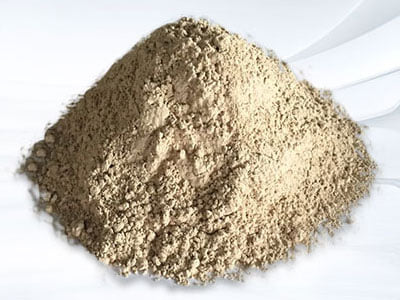Configuration of refractory materials for cement industry
The development of cement production technology mainly focuses on the kiln process of calcining cement clinker. In the rotary kiln for cement production, the configuration of the lining refractories in each part is as follows:
(1) The discharge port and discharge belt of the kiln
The lining materials used in the discharge port and discharge belt of the kiln are subject to serious mechanical wear and chemical erosion, so the material's anti-abrasion and anti-temperature shock properties are required to be high. The discharge belt generally uses high-alumina bricks with Al2O3 content of 70-80%, heat-resistant high-alumina bricks, spinel bricks and magnesia-chrome bricks; the discharge port uses heat-resistant concrete or silicon carbide bricks with corundum as aggregate. . There are also corundum, bauxite low-cement refractory castables and steel fiber reinforced refractory castables used for the front and rear kiln mouths. The kiln head cover is made of 16B steel fiber high alumina refractory castables.
(2) Firing belt
The temperature of the firing zone is relatively high, about 1200-1500 °C. Generally, magnesia-chrome bricks, direct-bonded magnesia-chrome bricks, sodium polyphosphate-bonded magnesia bricks, alkali-resistant bricks, spinel bricks, magnesia-zirconium bricks, and silicon-molded bricks are used. These refractory materials usually have high strength in both cold and hot states, and have good thermal shock stability, and have been widely used.
Magnesia-chrome brick: directly combined with magnesia-chrome brick, it has high high temperature resistance, SiO2 corrosion resistance and redox resistance, as well as high high temperature strength and mechanical stress resistance, and good hanging kiln skin performance. A large number of used in the firing belt.
When magnesia-chromium bricks are used in cement kilns, under the action of alkali (or sulfur), stable trivalent chromium is converted into hexavalent chromium with strong oxidizing ability. The content of chromium compounds in the gas exceeds 10mg/m3, and the aqueous solution contains chromium If the amount exceeds 0.5mg/l, it will cause extremely serious harm to the human body. Since the mid-1980s, industrialized countries have formulated a series of environmental protection and hygiene standards. The drainage of the factory is fully monitored, and the use of magnesia-chrome bricks is subject to certain restrictions.
Spinel bricks: Spinel bricks that appeared in the 1990s not only have a strong ability to hang kiln skin, but also resist alkali, sulfur melt and clinker liquid phase erosion, thermal shock and mechanical stress caused by kiln body deformation. , and in terms of thermal load resistance, etc., it has a series of advantages, and its performance is better than that of magnesia-chrome bricks, which has become the mainstream of the development of alkaline brick technology in the world today.
Magnesia-Zirconium Brick: The biggest feature of zirconia is the formation of micro-cracks around the particles, which absorbs external stress and has large fracture strength under hot and cold conditions. In a series of comparative tests with spinel bricks, the corrosion resistance of magnesia zirconium bricks to harmful substances such as SO3, CO2, and alkali vapor, the corrosion resistance of clinker liquid phase, the influence of redox atmosphere on it, and its compressive strength and so on have obvious advantages. However, magnesia-zirconium bricks need to add a large amount of scarce resource zirconia, the price is high and the source of raw materials is not guaranteed.
(3) transition zone
The transition zone is adjacent to the firing zone. The environmental characteristics are that the temperature of the cylinder is high and the temperature changes frequently. The kiln skin falls off when hanging, and the chemical erosion is serious. The commonly used refractory materials include corundum and bauxite (50-80%). AI203) high-alumina bricks, direct-bonded magnesia-chrome bricks, ordinary magnesia-chrome bricks and spinel bricks, etc. In recent years, a large number of silica molybdenum bricks have been used in the transition zone of cement kilns. The bricks have high soft temperature point, high strength, high abrasion resistance, low thermal conductivity and good spalling resistance. , Alkali oxide-based volatile components have strong resistance to penetration and corrosion resistance are also better than alkaline bricks. At the same time, the thermal shock stability of the brick is better than that of the alkaline brick, and the structural strength is also much higher than that of the alkaline brick.
(4) Cooling belt
The temperature of the cooling zone is still relatively high (about 1100-1300°C), but the chemical erosion is not as serious as that of the front zone. Generally, high-alumina bricks, magnesia-chrome bricks, phosphate-bonded high-alumina bricks, magnesia-alumina spinel bricks and corundum high-strength bricks are used. Low cement refractory castables, etc.
(5) Decomposition belt
In the part where the decomposition zone and the preheating zone are connected, the thermal stress and chemical stress are small, and clay bricks, high-alumina bricks, ordinary magnesia-chrome bricks, etc. can be selected; High-alumina bricks with Al2O3 content of 50-60%, ordinary magnesia-chrome bricks, spinel bricks, special high-alumina bricks and anti-stripping high-alumina bricks, as well as silicic acid as heat insulating materials Calcium board and series of high-strength insulating bricks, high-aluminum high-strength low-cement refractory castables, and 50S anti-skin castables.
(6) Preheating belt
The preheating belt lining should have sufficient alkali resistance and heat insulation properties, and the industrial application is mainly alkali-resistant and heat-insulating clay bricks. If lightweight bricks are used, the temperature of the kiln cylinder can be reduced by 60-100°C compared with the use of clay bricks of the same thickness, and for dry process kilns, the unit heat consumption can be reduced by 21-38kJ/kg clinker.
(7) Preheater system
The preheater system needs to choose the lining material with good alkali resistance and thermal insulation performance. Such as a series of alkali-resistant bricks and alkali-resistant castables. In the straight cylinder, cone part and connecting pipeline of preheater and decomposition furnace, alkali-resistant clay bricks are mainly used, and heat insulation composite layer is added. Mineral wool or concrete pouring; castables are often used in elbows; semi-siliceous clay bricks with dense structure are used in the ascending pipeline at the kiln tail to prevent alkali erosion.
Alkali-resistant castable: In the case of alkali corrosion, a glaze layer appears on the surface of the alkali-resistant castable after use, and the substance generated in the glazed layer is kAs2, which is surrounded by a glass phase matrix, and the surface of the castable at a lower temperature. Liquid phases appear, and these viscous liquid phases can block the cracks on the cold surface and act to prevent the penetration of alkali into the interior of the refractory.
(8) Cooler system
The temperature of the material inside the cooler changes the most, and the degree of erosion of the refractory material is not uniform, especially in the shrinkage of the cooler and the part between the air inlet of the tertiary air duct and the cooling shrinkage, which is the most severely eroded. In addition, due to the accumulation of dust and the expansion of the masonry itself, it will also cause overall damage to the side wall. The refractory materials used in the cooler system include mullite high-strength wear-resistant castables, refractory bricks, light-weight castables, thermal insulation bricks, thermal insulation boards, etc. Common magnesia-chrome bricks and high-alumina bricks can be used in the throat area and high temperature area; clay bricks can be used in medium and low temperature areas.
For some large rotary kilns, the heat load on the lower part of the kiln hood is relatively high. If the general high-alumina refractory castable is not well controlled for curing and heating, it is easy to burst the block; the top of the kiln hood is close to the tertiary air duct, and the dust-laden airflow The scouring is relatively serious, and the construction of the top castable is more difficult, and the fluidity and early strength of the material are relatively high.
(9) Other parts
In addition to the above parts, other important equipment of the cement kiln needs to be lined with refractory materials. The elbow of the tertiary air duct and the air valve have a large change in heat and cold, and are washed by the high-temperature clinker particles, and the castable is prone to loosening and peeling. . C4 and C5 cones and their feeding pipes, decomposition furnace cones and smoke chambers are very easy to be crusted, and it is difficult to clean up. When cleaning, manual iron tools are required, which will inevitably cause mechanical damage to the refractory castable. And serious crusting occurs, it is necessary to stop the kiln for treatment. High-strength anti-skinning silicon carbide castables are required, the maximum operating temperature is 1400 °C, the bulk density after baking at 110 °C is greater than or equal to 2.50g/cm3, the silicon carbide content is greater than or equal to 55%, the flexural strength at 110 °C × 24h is greater than or equal to 11MPa, and the 110 °C × 24h compressive strength ≥ 80MPa. In addition, C1-C3 should use high-strength alkali-resistant castables, C4, C5 (except the cone part) use high-temperature and high-strength alkali-resistant castables, the maximum operating temperature is 1400 ° C, the bulk density after baking at 110 ° C is ≥ 2.20g/cm3, oxidation Aluminum content ≥45%, 110℃×24h flexural strength ≥8MPa, 110℃×24h compressive strength ≥80MPa. The decomposition furnace adopts high-strength wear-resistant castables, the maximum operating temperature is 1600℃, the bulk density after baking at 110℃ is ≥2.70g/cm3, the alumina content is ≥80%, the flexural strength at 110℃×24h is ≥10MPa, and the resistance at 110℃×24h is ≥10MPa. Compressive strength ≥ 100MPa.
-

Thermal storage alumina balls
The Thermal storage alumina ballsis made of industrial alumina and refractory kaolin as the main raw materials through scientific formula, forming and high-temperature calcination.Thermal storage alumina ballss are divid··· -

Anti-stripping high alumina brick
Use description of Anti-stripping high alumina brick1. Anti-stripping high alumina brick has a good application in low temperature parts such as large and medium-sized cement precalciner, kiln smoke chamber, indoor decom··· -

Anti-stripping high alumina bricks
Anti-stripping high alumina bricks are made of high alumina bauxite clinker, mullite, kyanite, zircon sand, and binder after granulating and powdering processes, mixed in a certain proportion, pressed into shape, and fir··· -

silica hot repair refractory
Performance index of silica hot repair refractoryThe material is a kind of plastic unshaped refractory material, its main component is SiO2, it is made of special clinker and various binders and additives, and it is proc···

